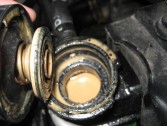
QMotor Mobile App
Find it on the App Store.


The way you treat your new car will directly affect its long-term performance, efficiency and longevity. Failing to properly run-in your engine, transmission, and tyres will have serious negative effects later on.
Despite the technology and intelligence car manufacturers have, new cars still require a certain treatment in order to get the best performance out of them. The moving parts of the engine need an adjustment period before reaching normal operating conditions, and these conditions are determined by how the engine has been run-in. The run-in involves settling the piston rings and ensuring that the bearings and cylinders wear evenly, but it’s not only the engine that needs a running-in. The transmission, tyres and brakes all benefit from it too.
TÜV SÜD in Germany, one of the world’s leading technical service providers of testing, product certification, and knowledge services, has given some tips on how to run-in your new car the first 1,000km, here is a summery of these tips.
By following these simple steps you can help ensure that your engine reaches its maximum performance and endurance condition. This will maximize you car’s power, fuel economy and engine life.
Safe driving everyone!

The Q Motor team has included some valuable tips for you which will help you pass your driving...

The engine is the most important part of the car at all, and it includes
.jpg)
Names are a large and wide world with many meanings. Our awareness of the things around us...

This guide contains a definition of traffic violations, traffic points system, classification of...
Comments